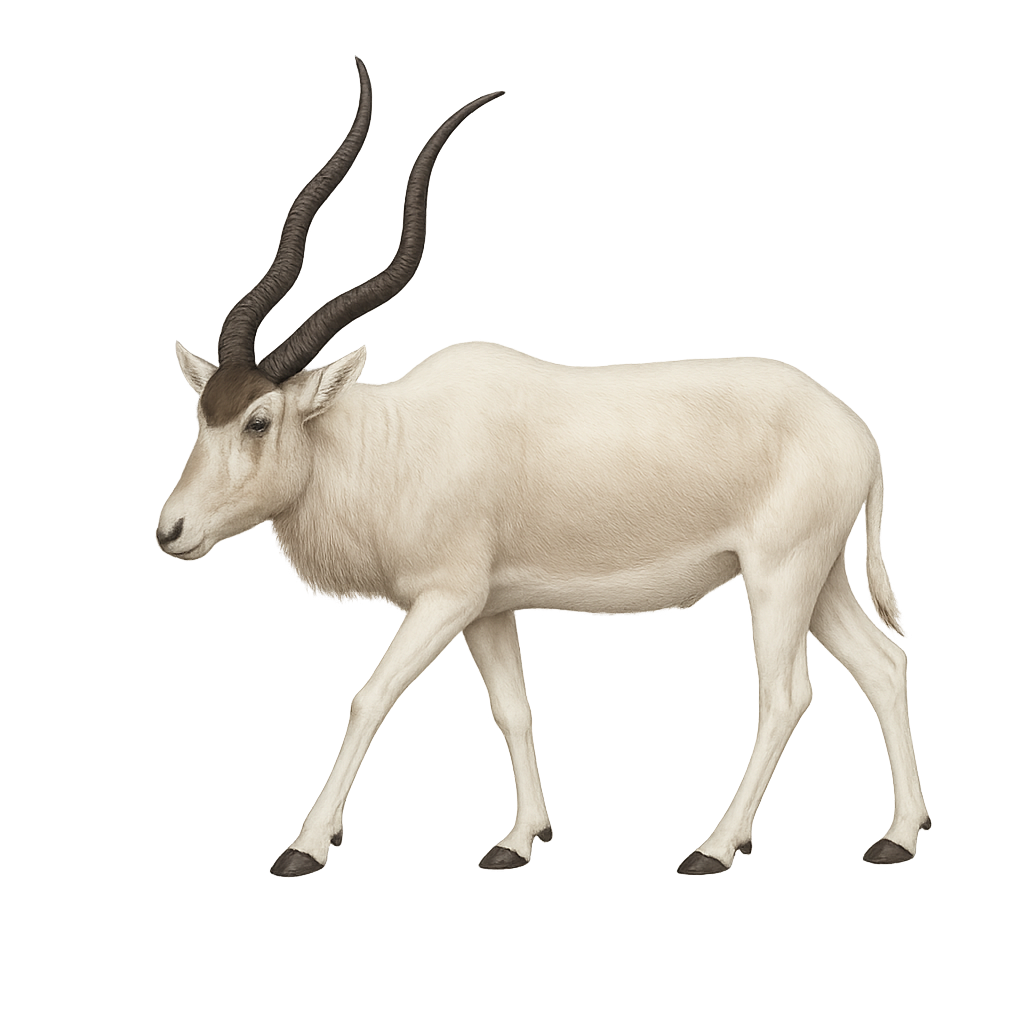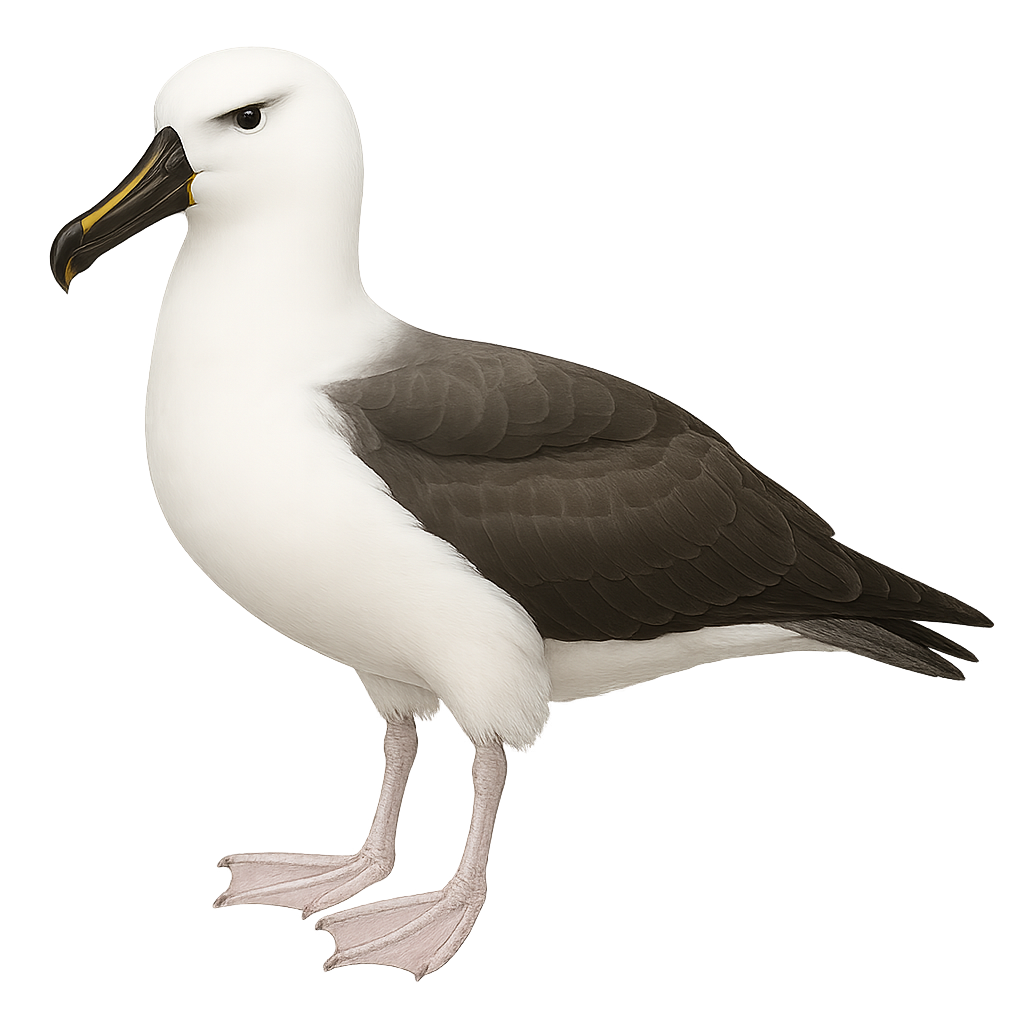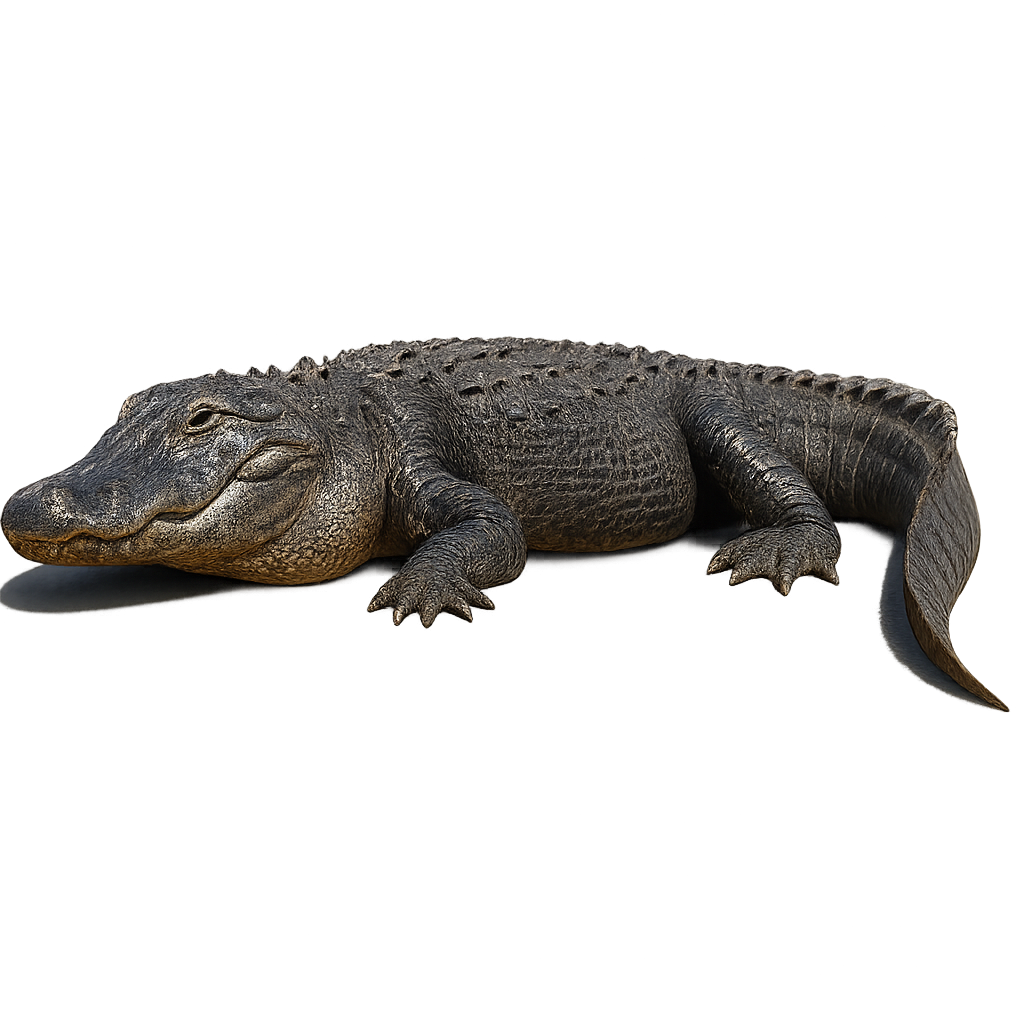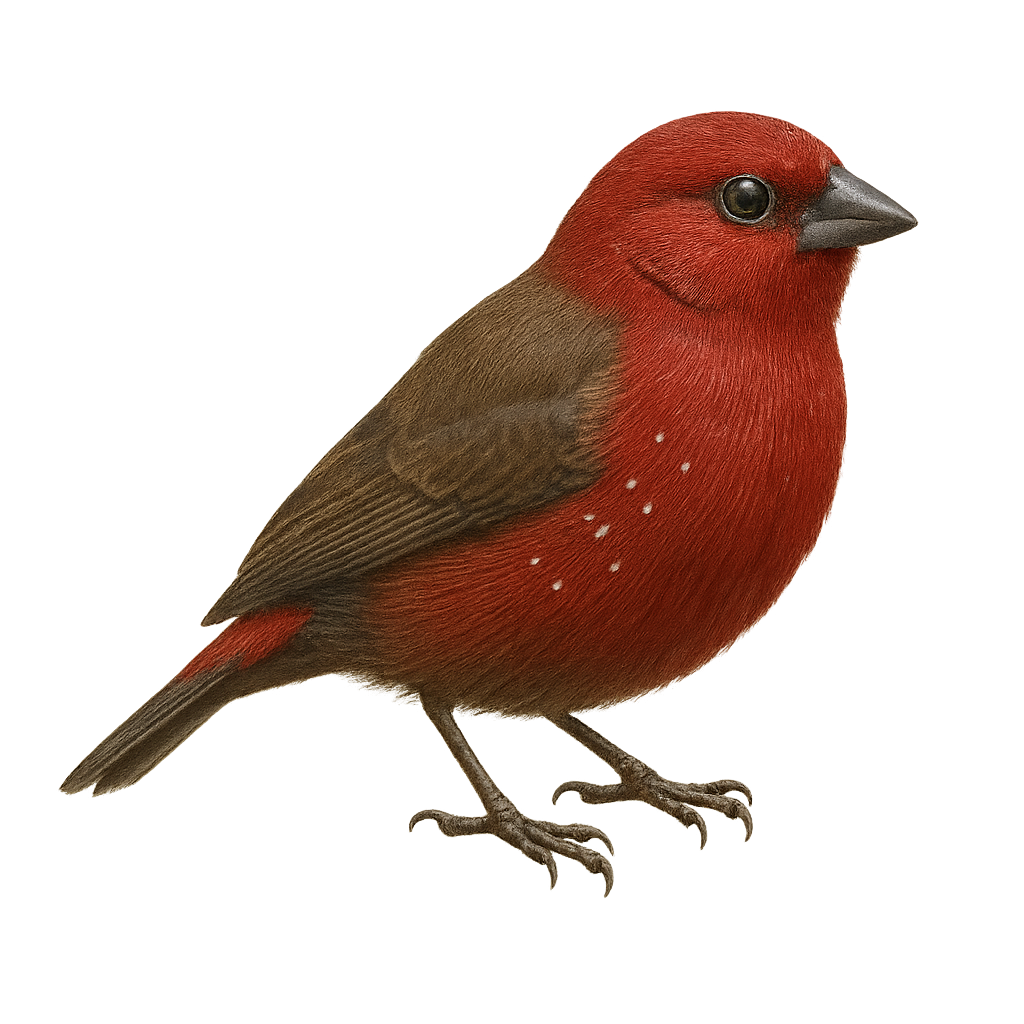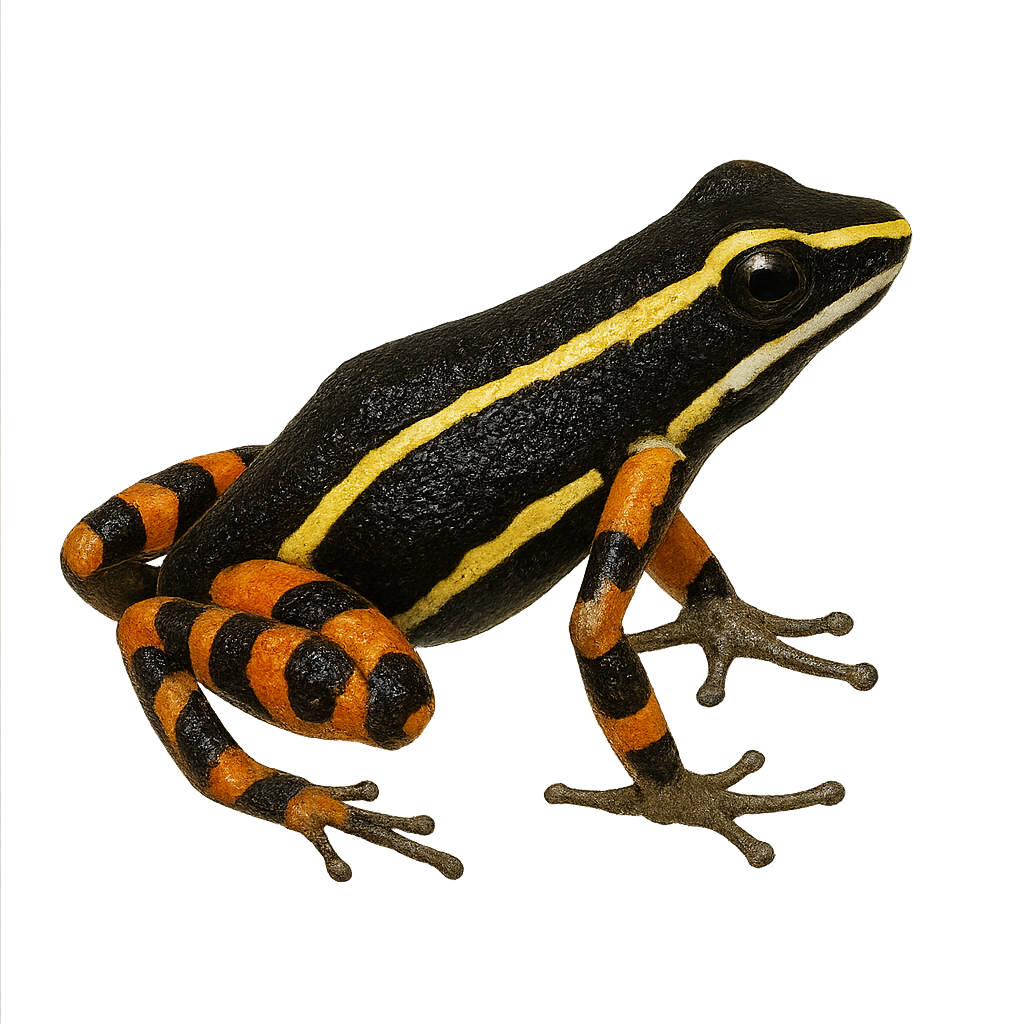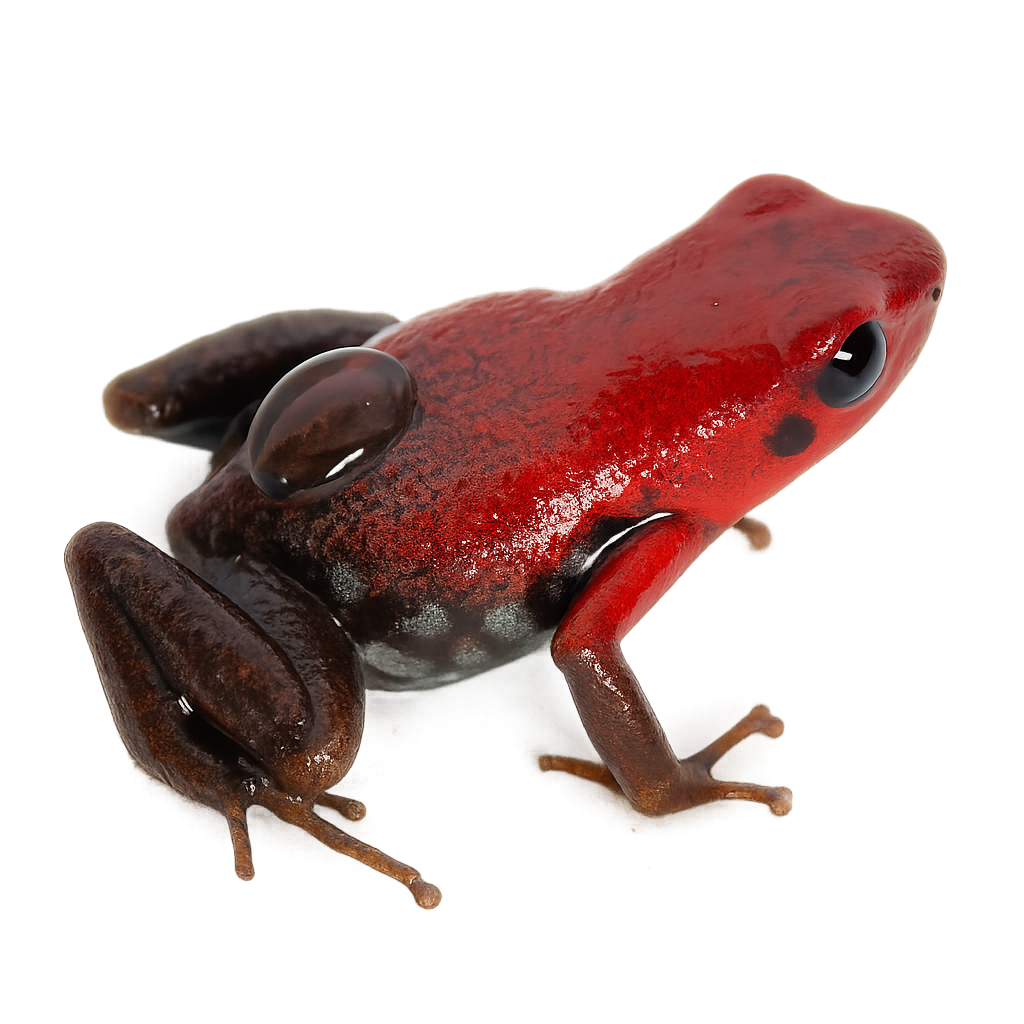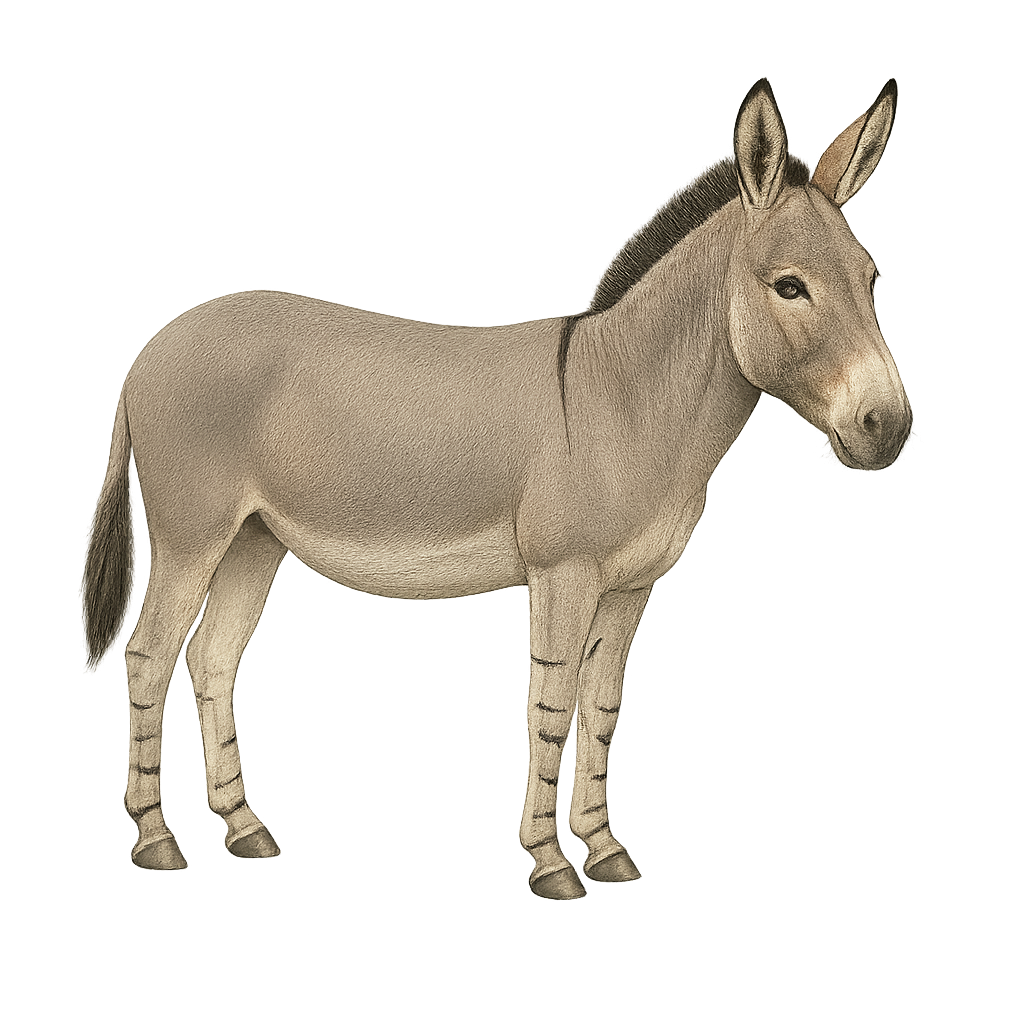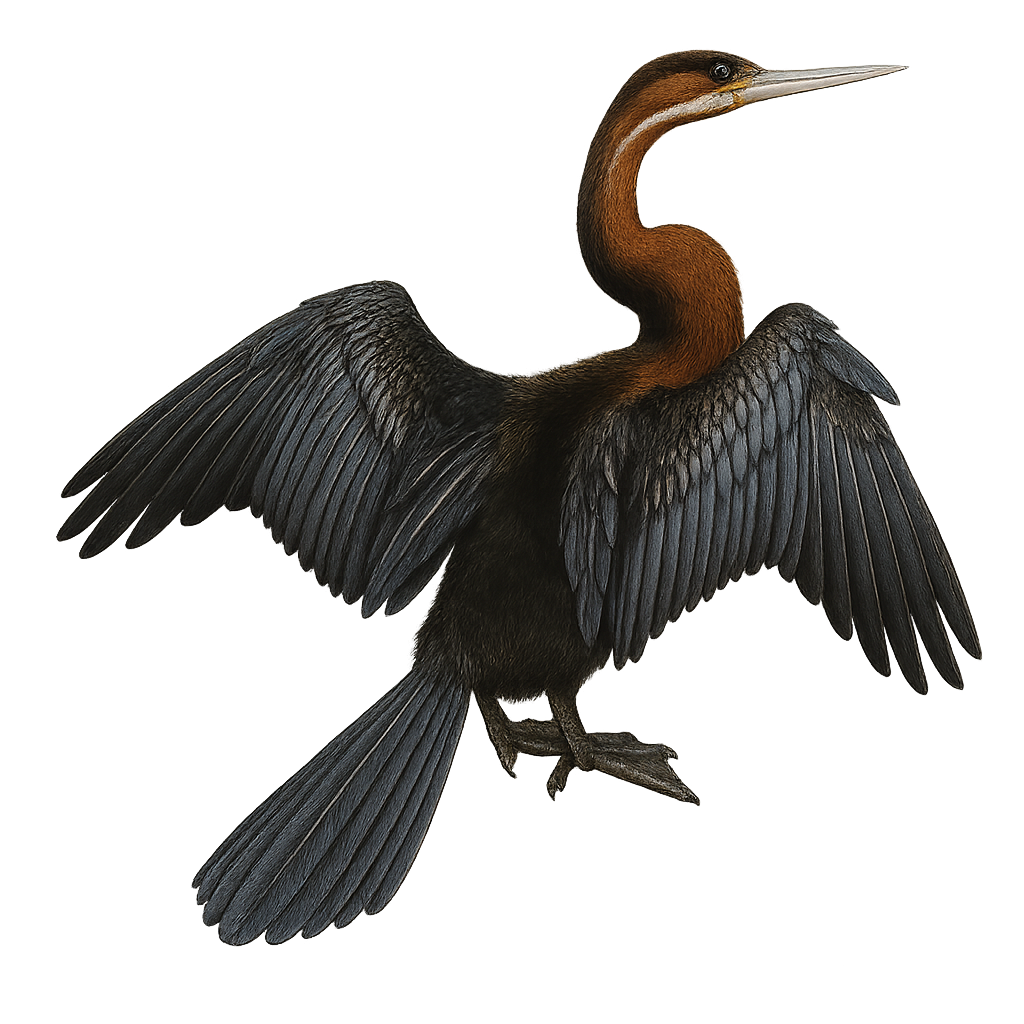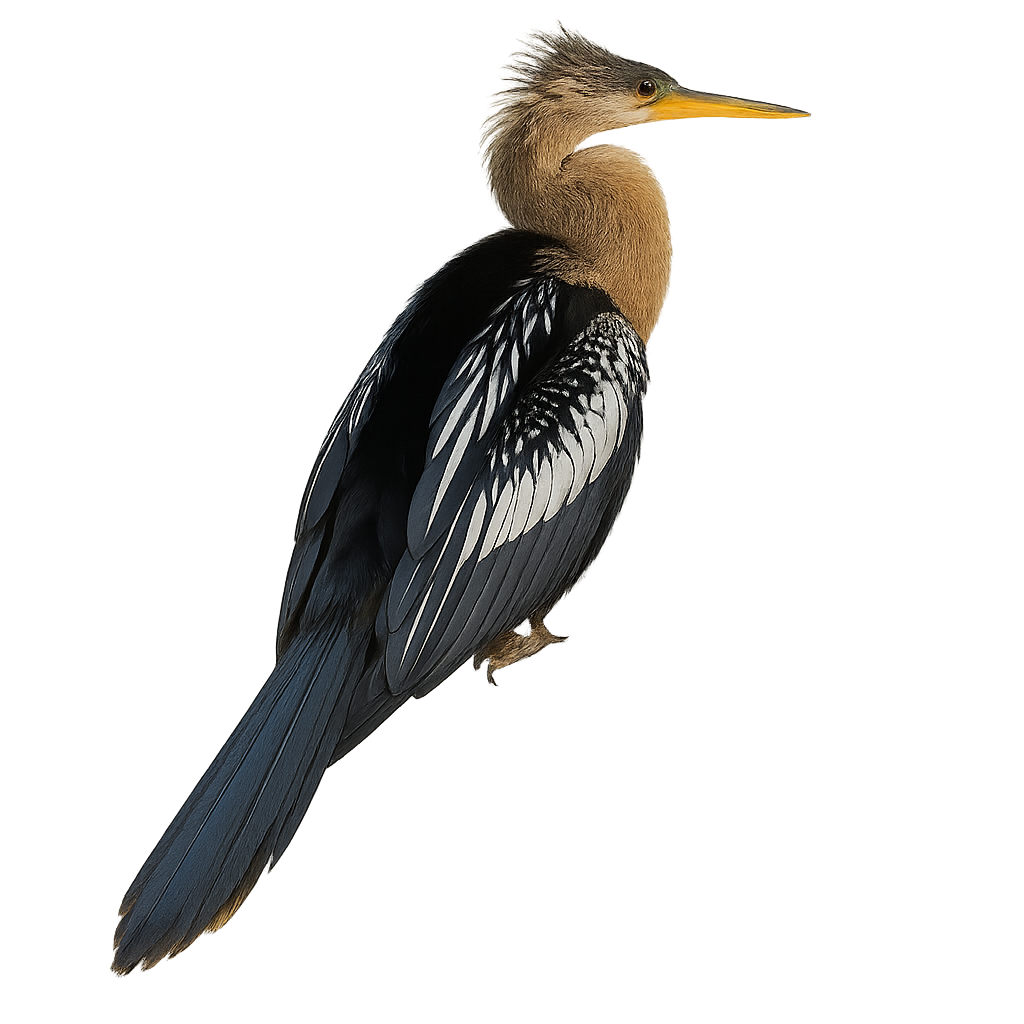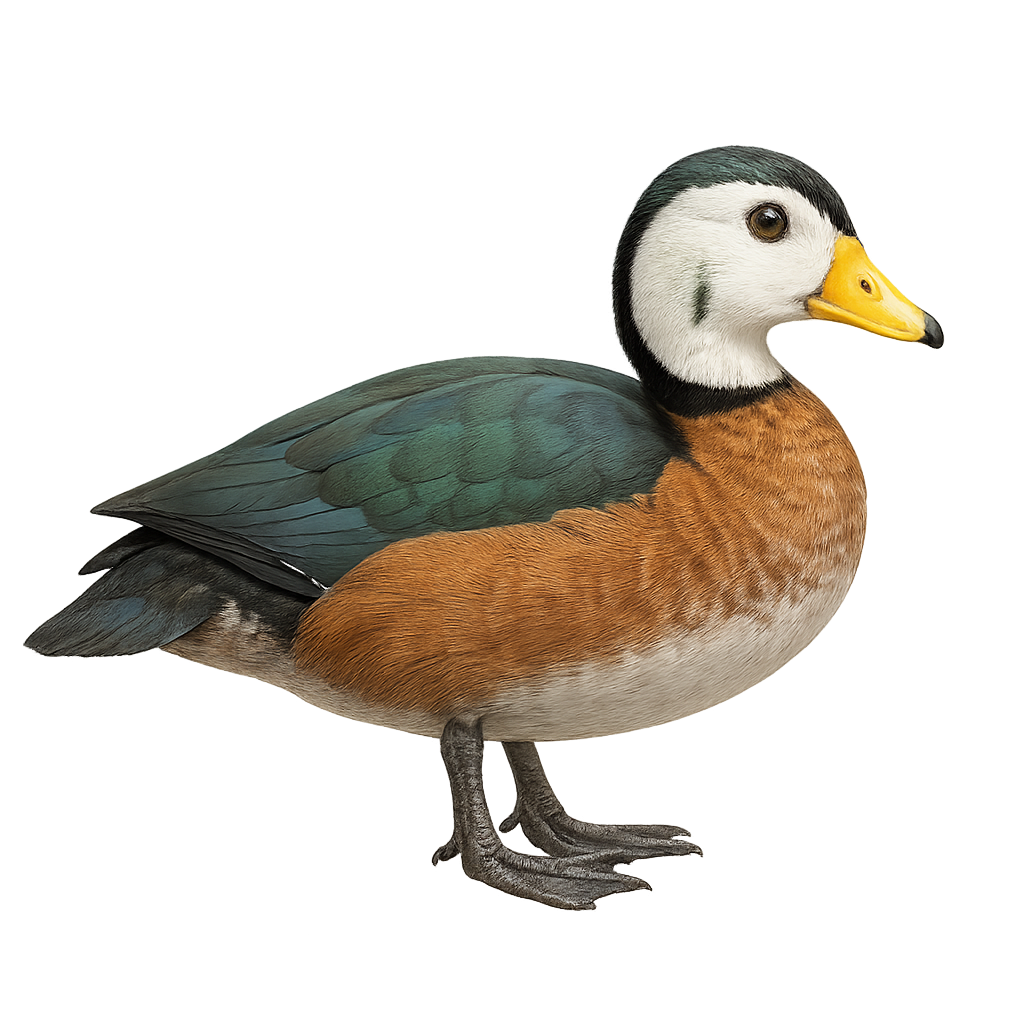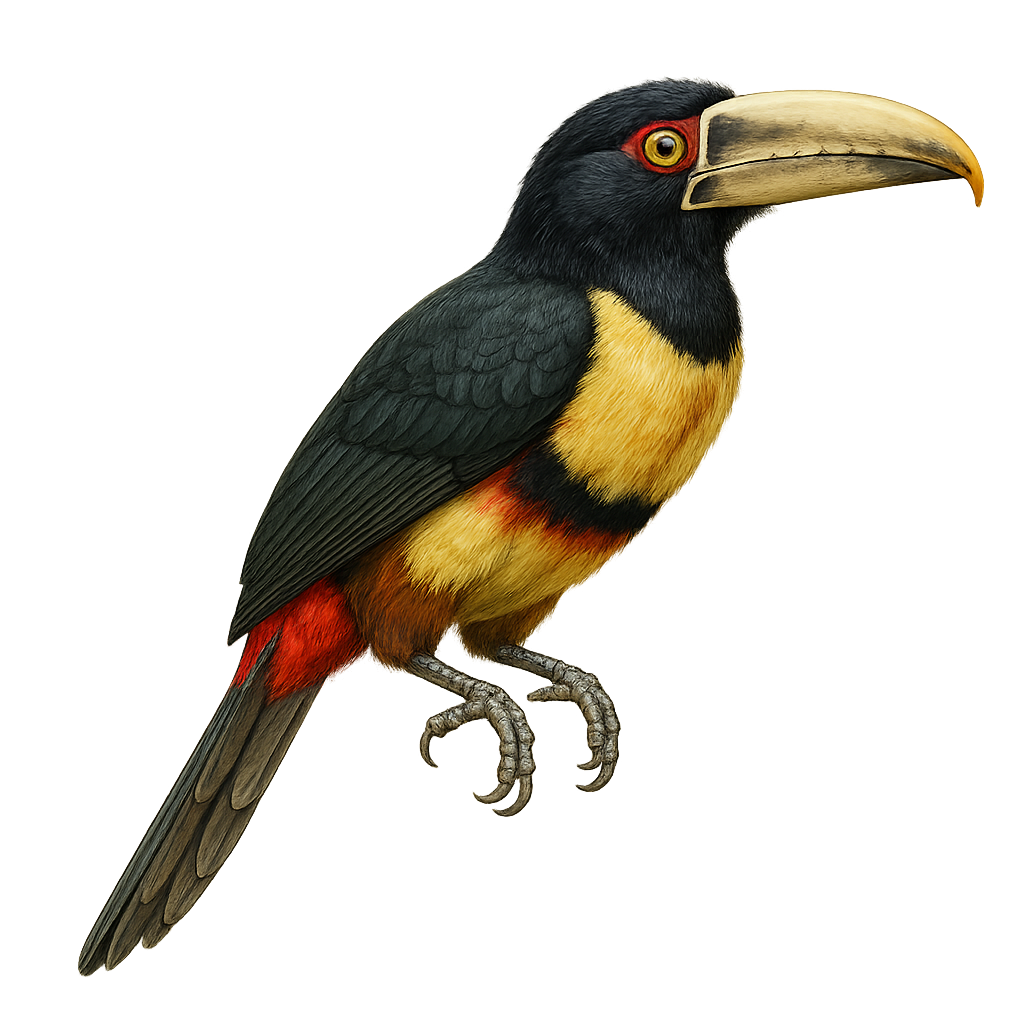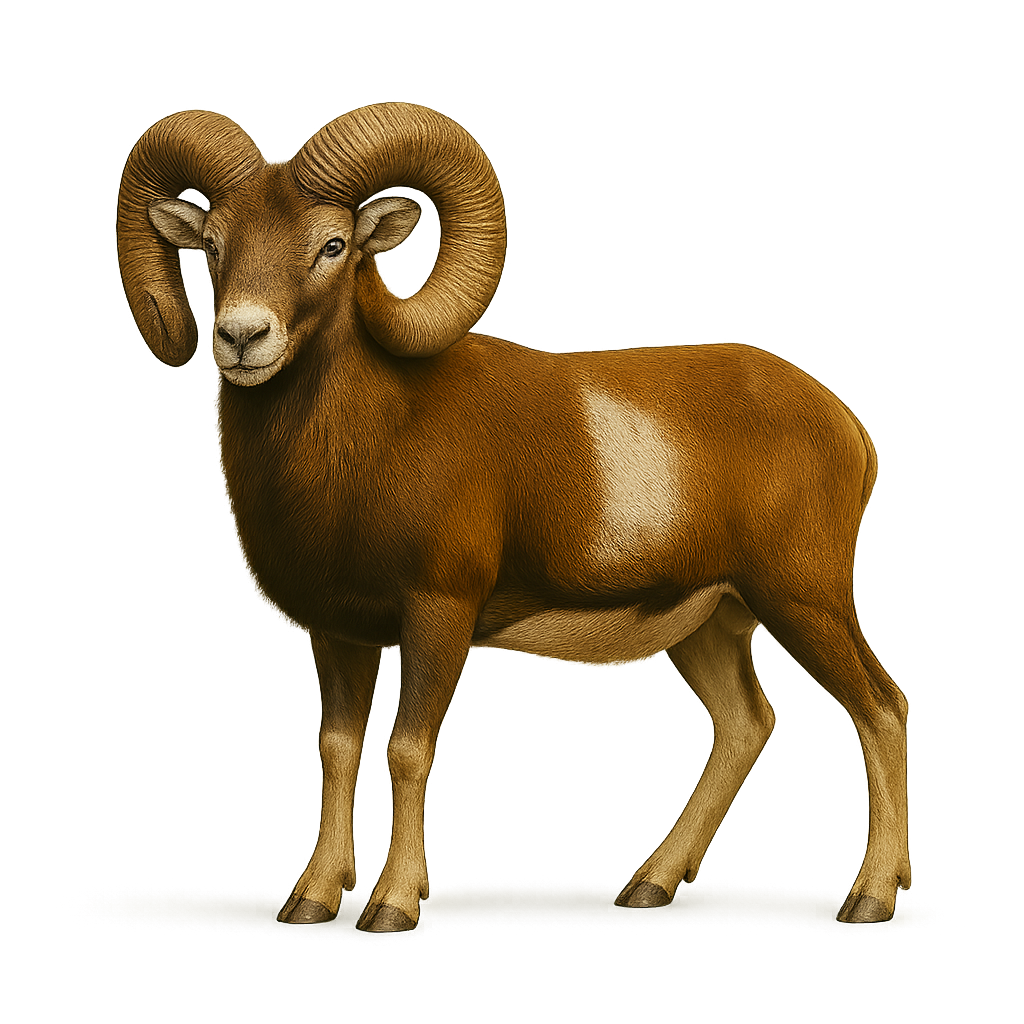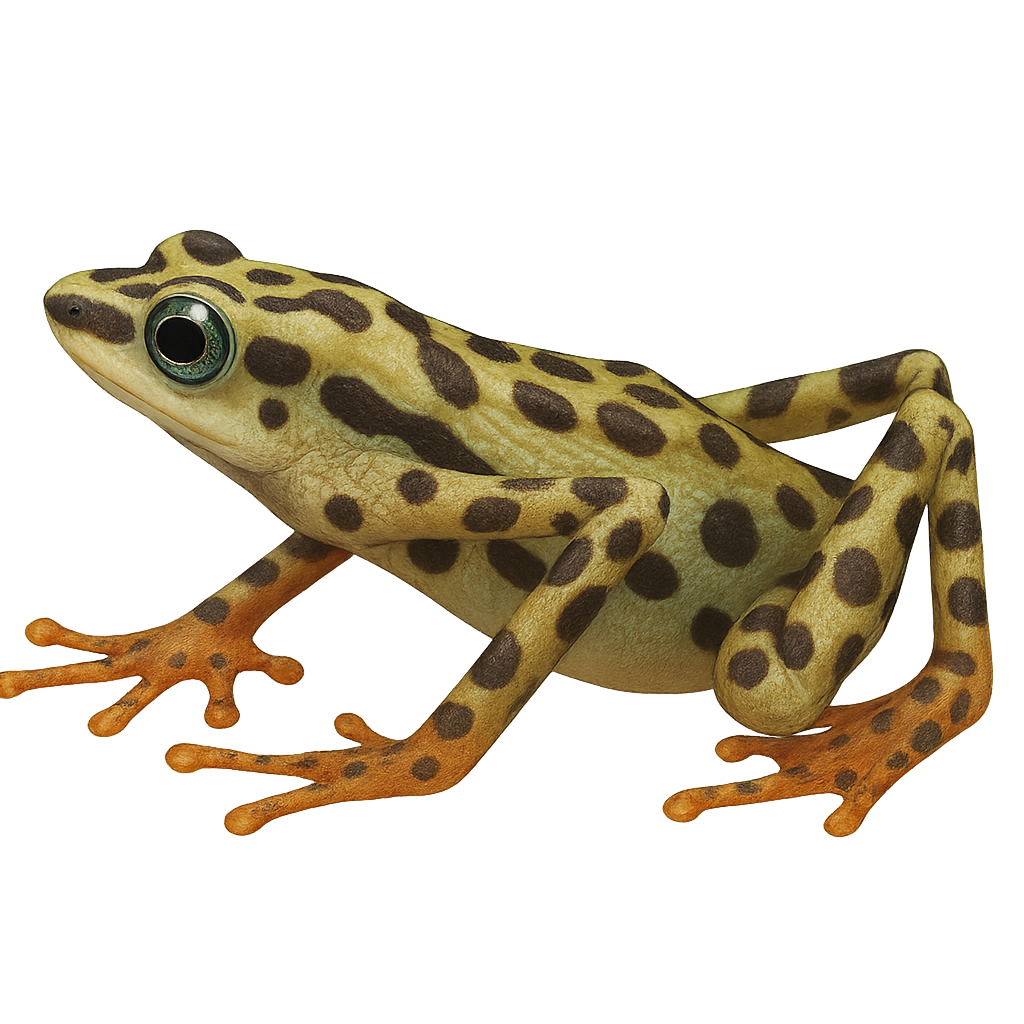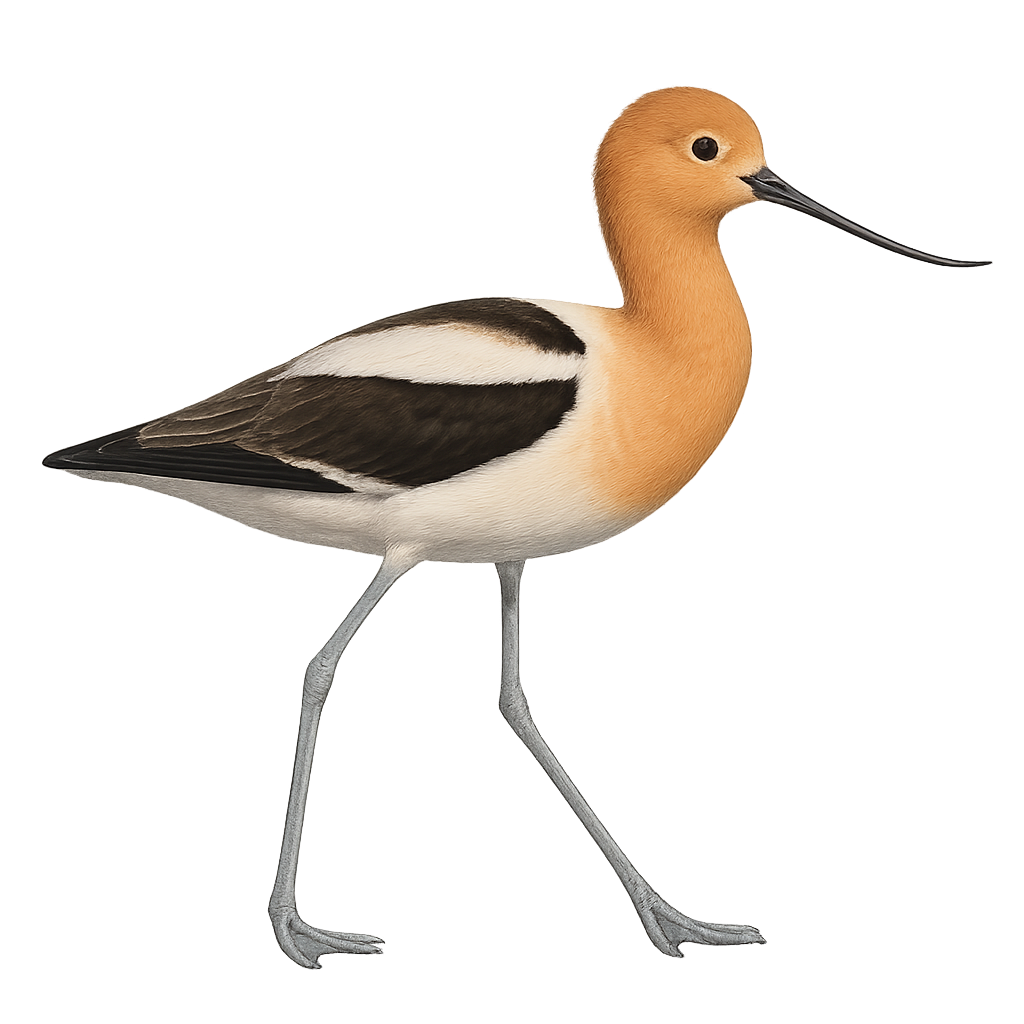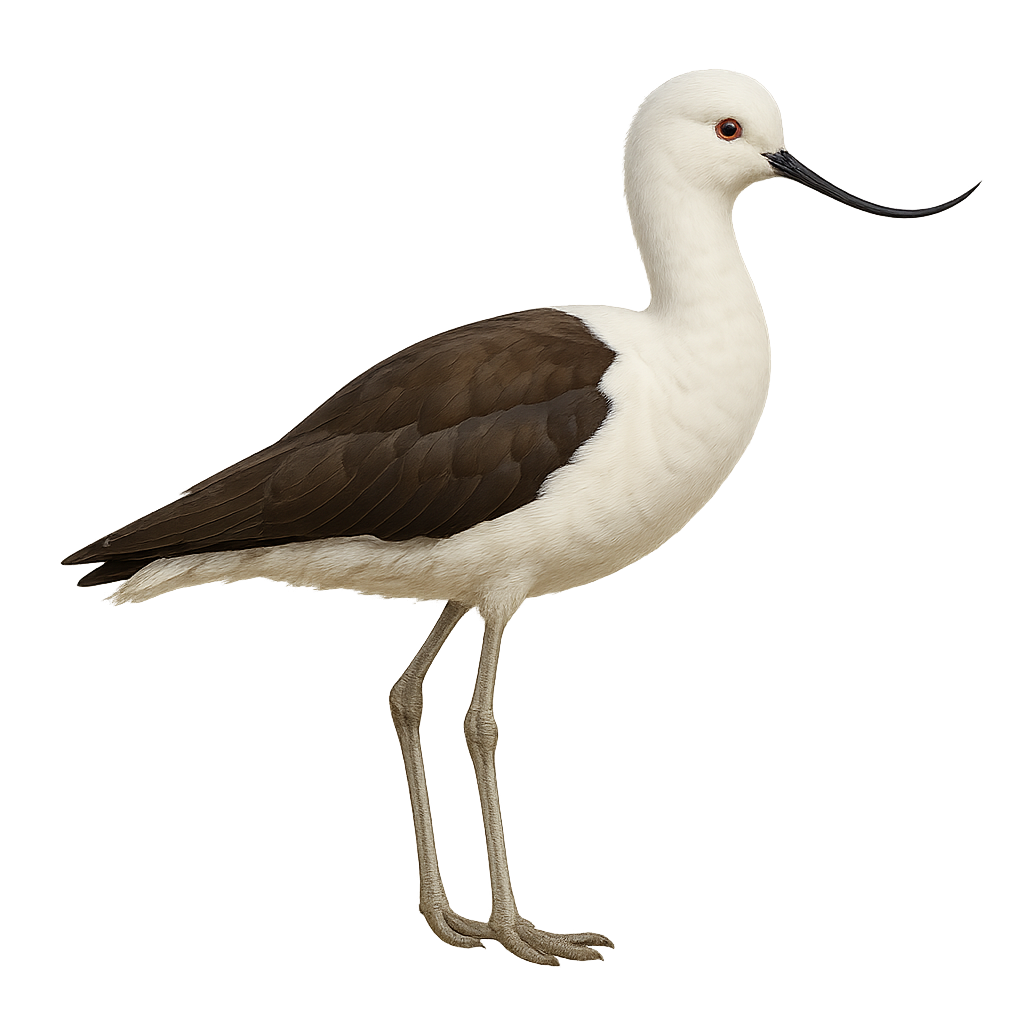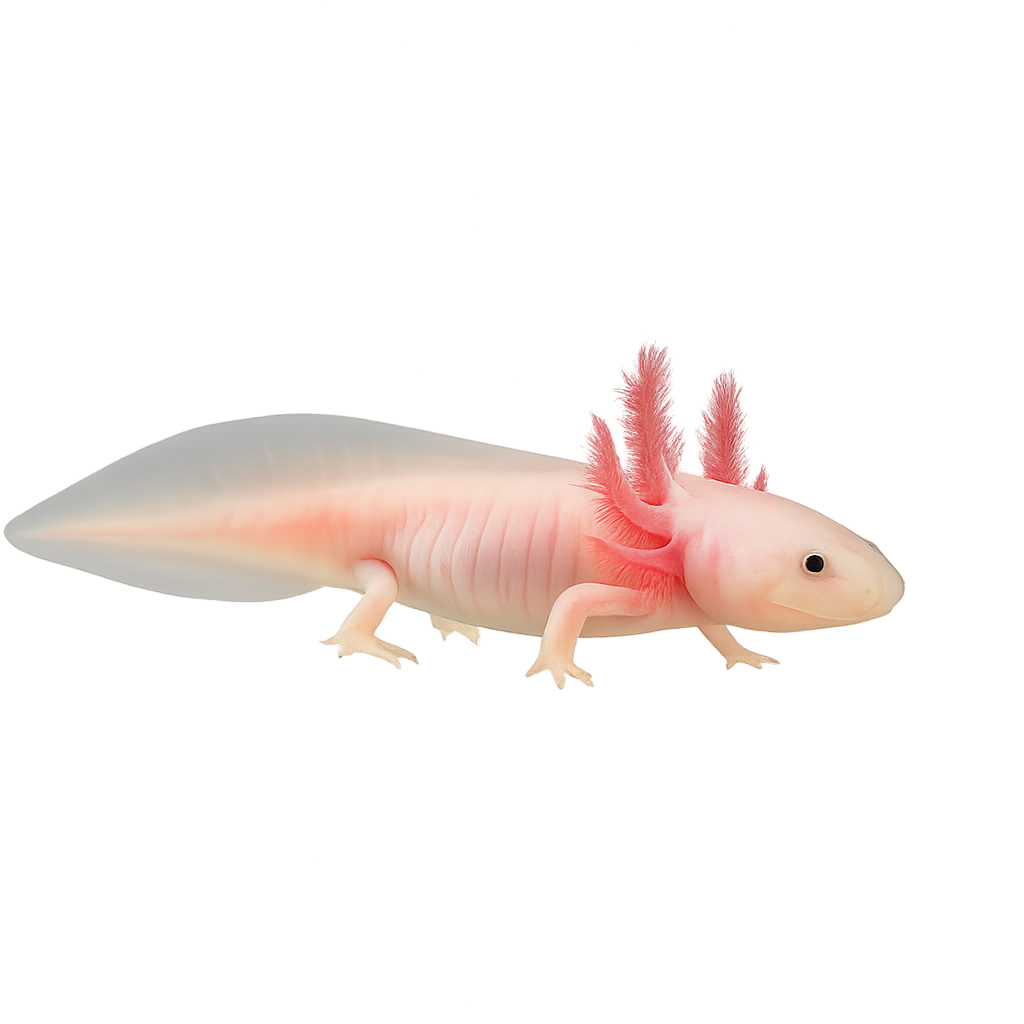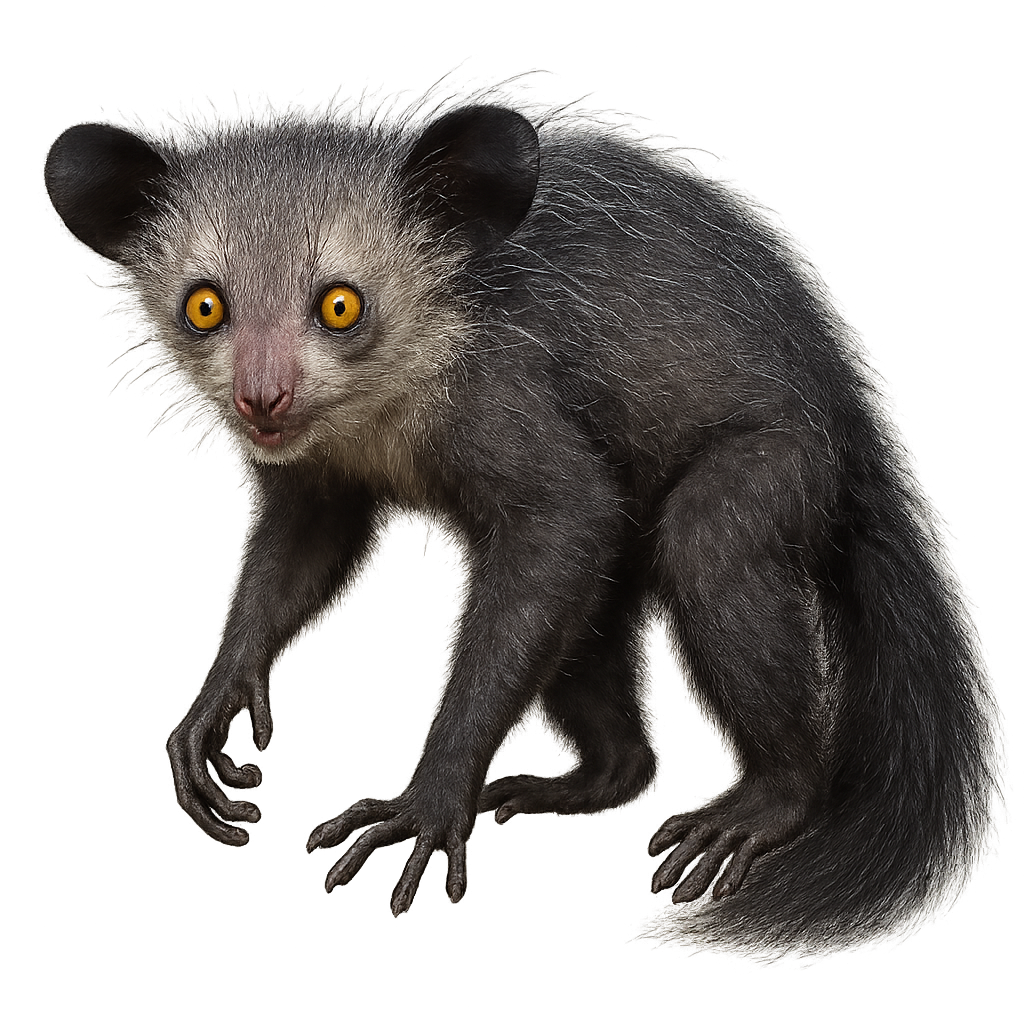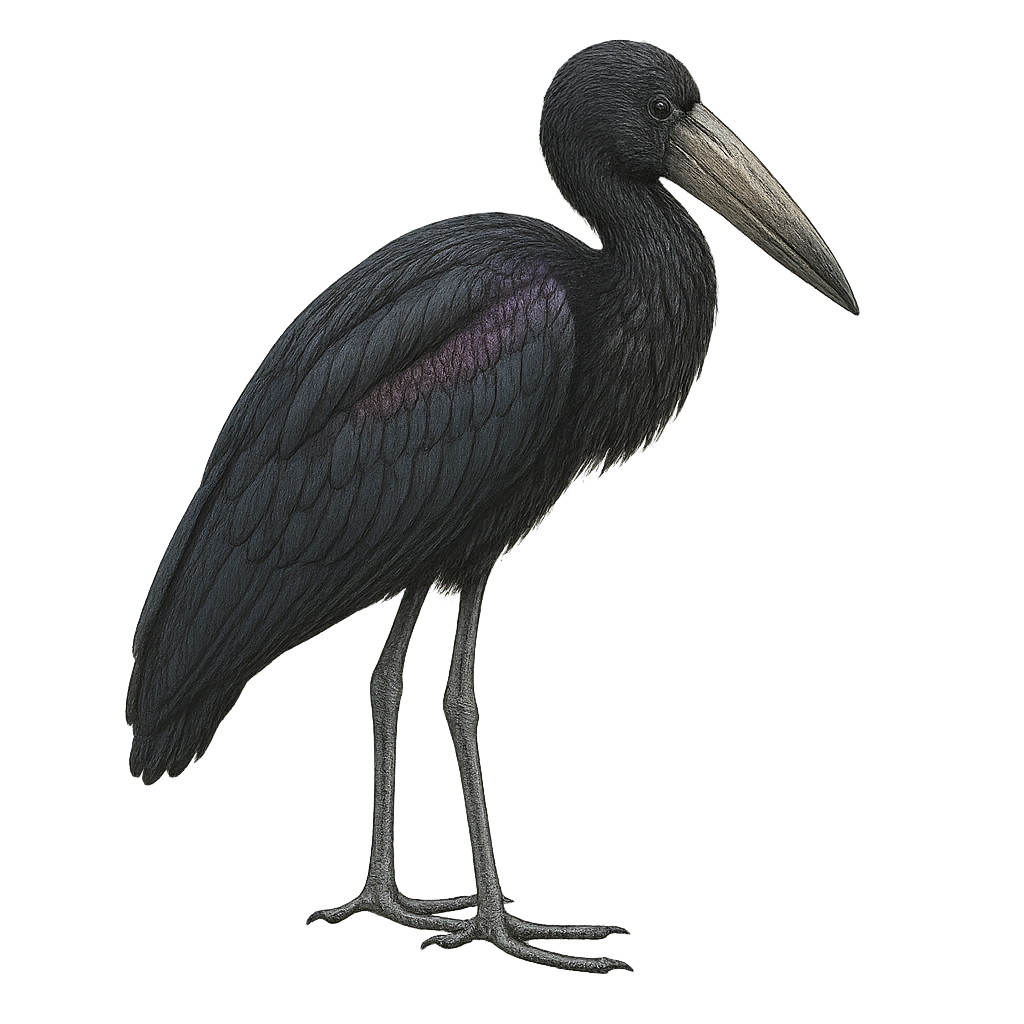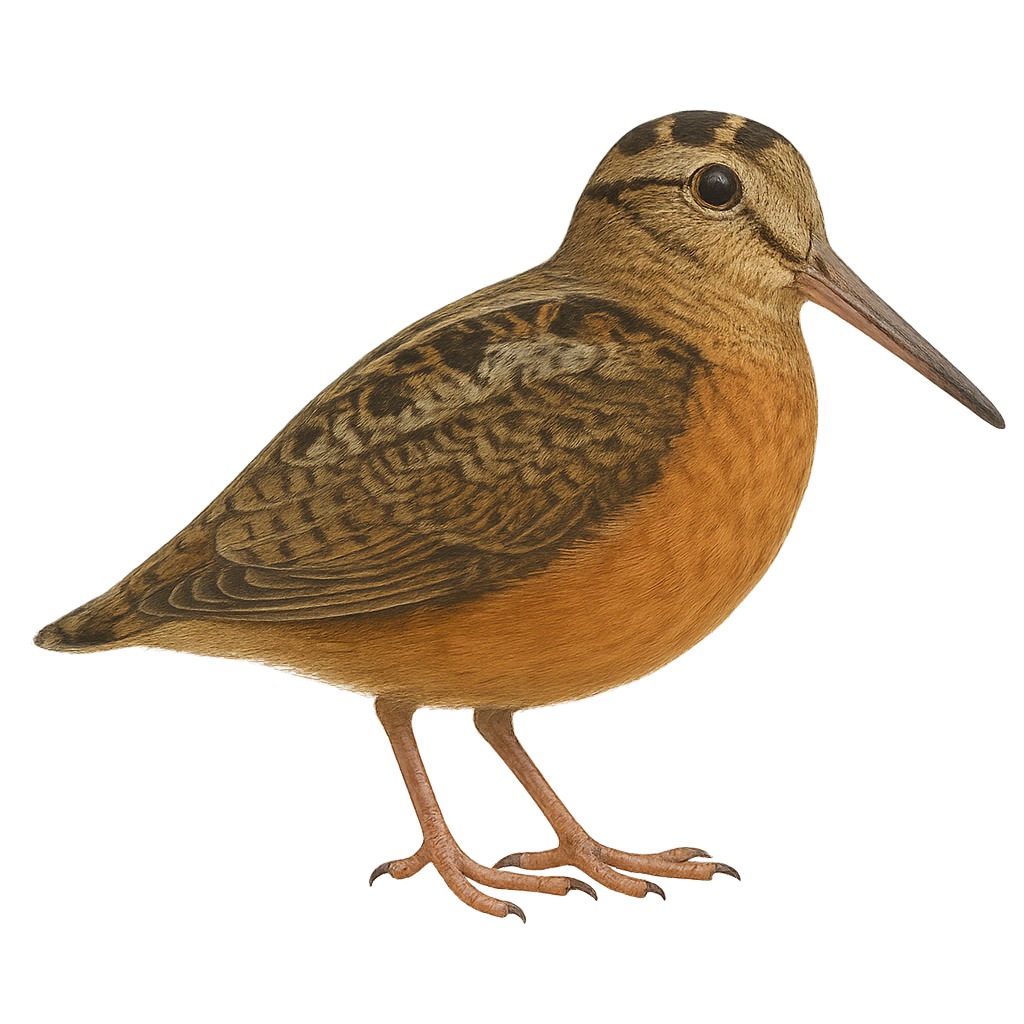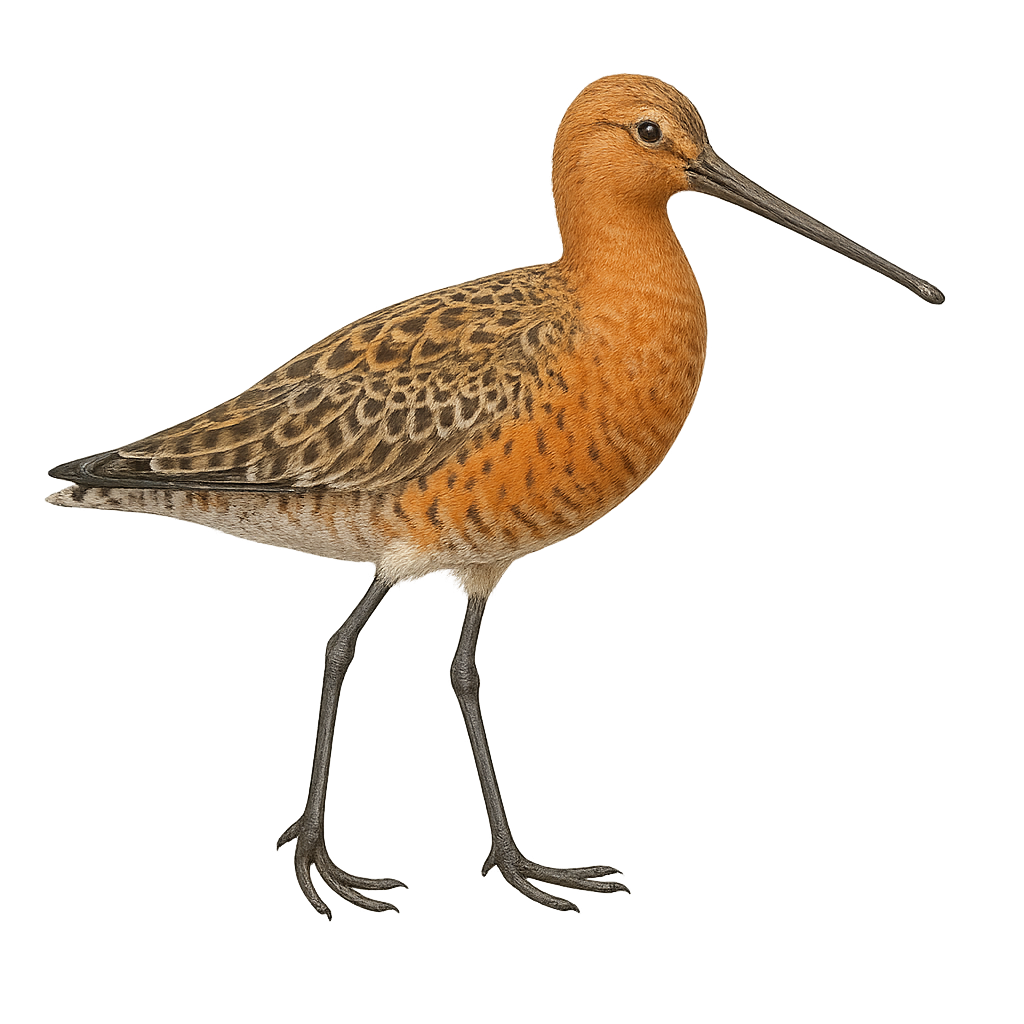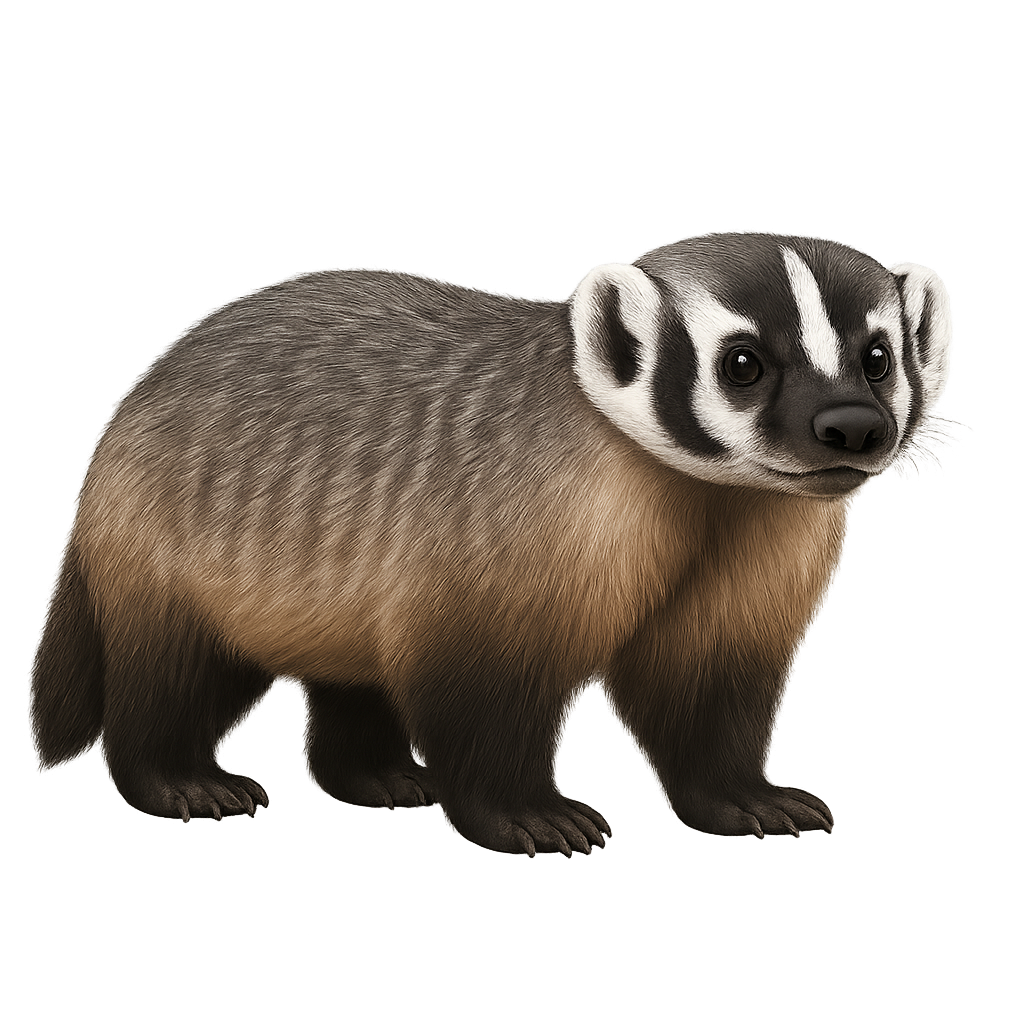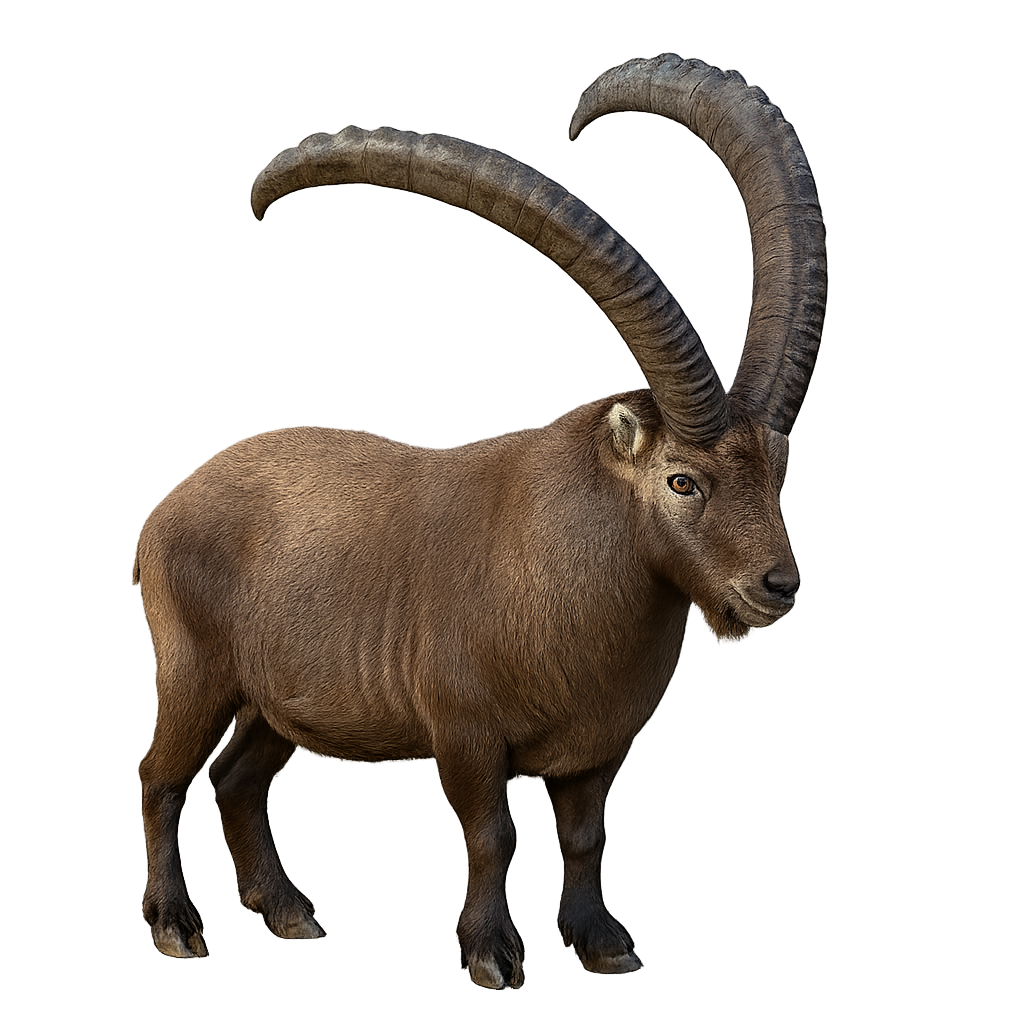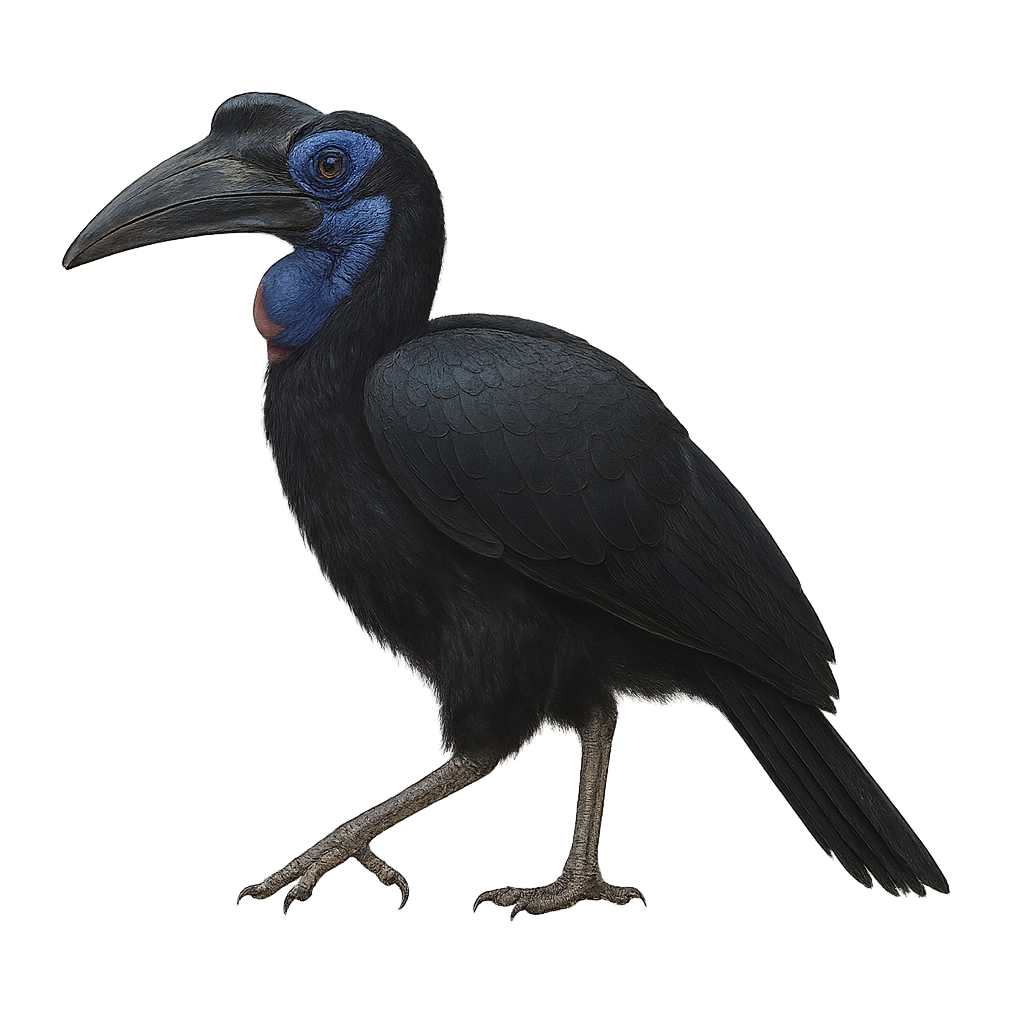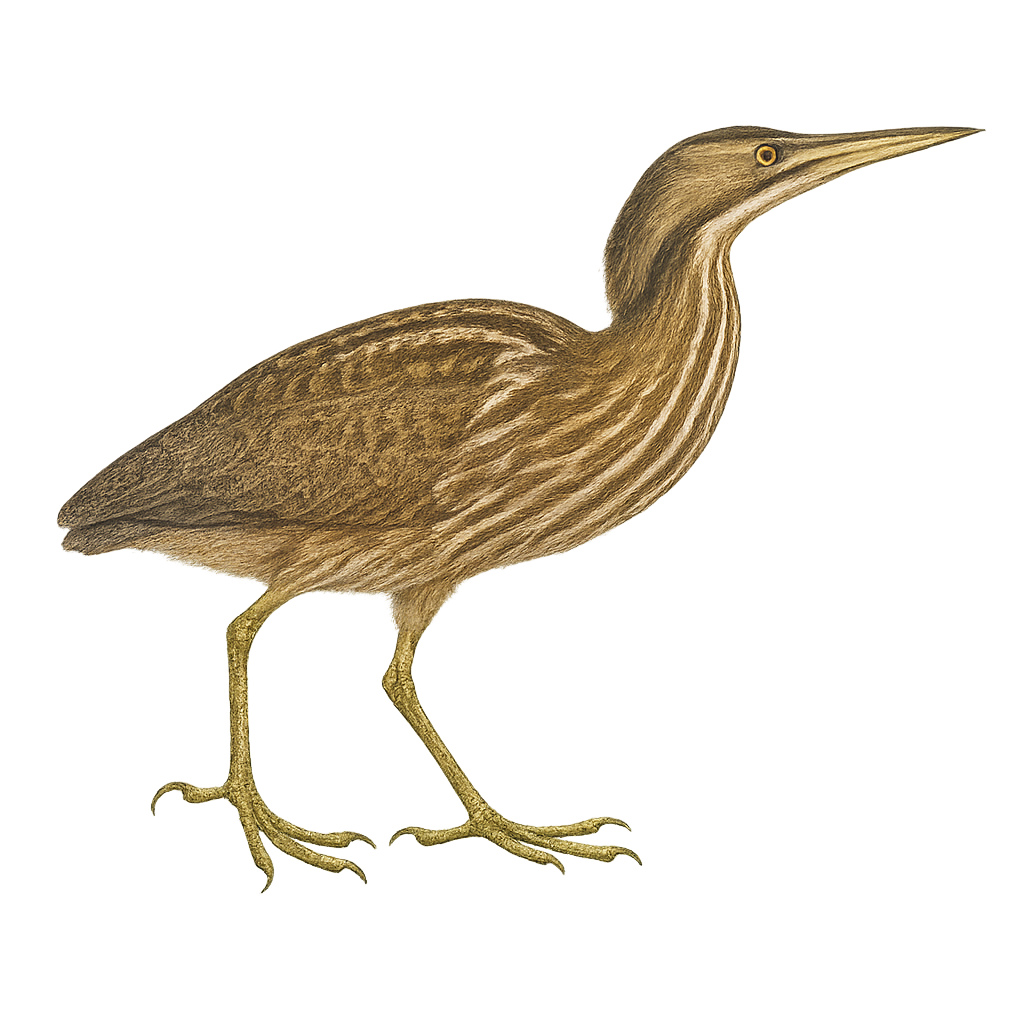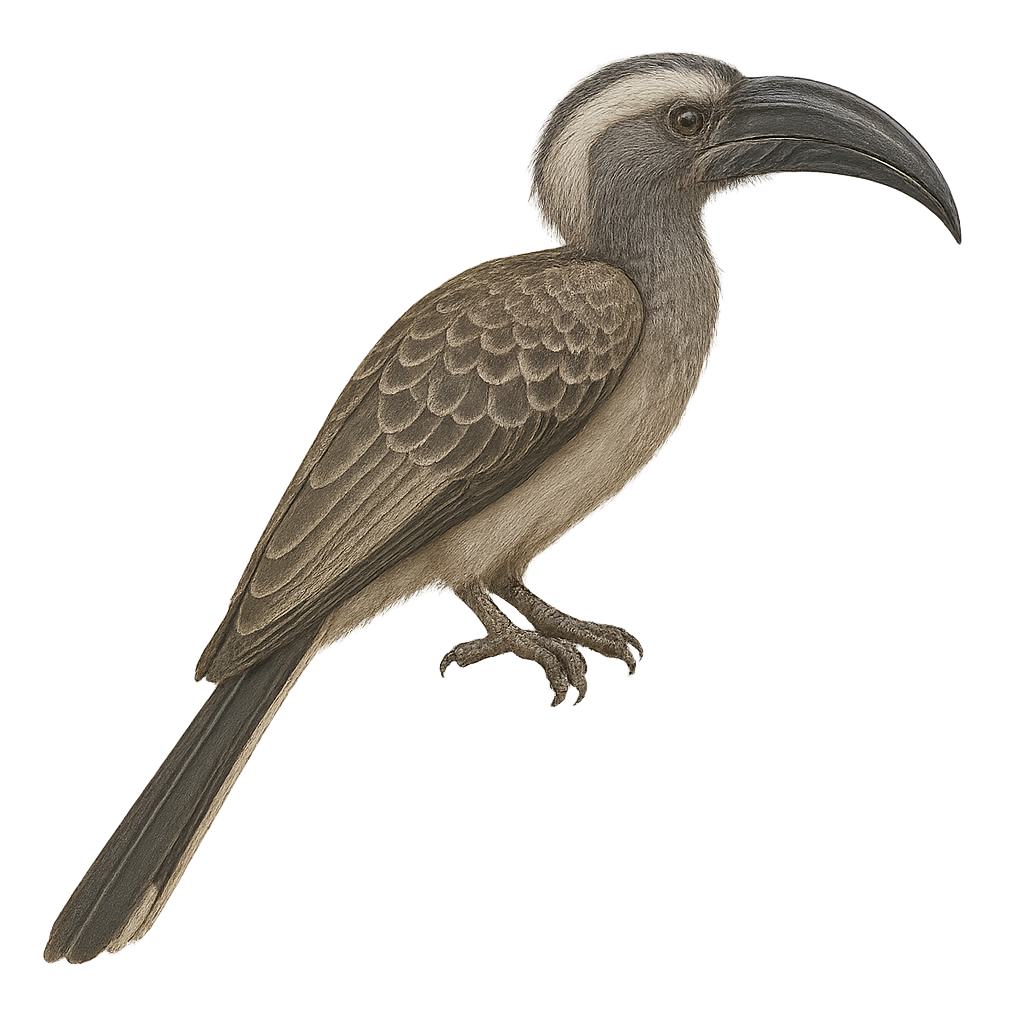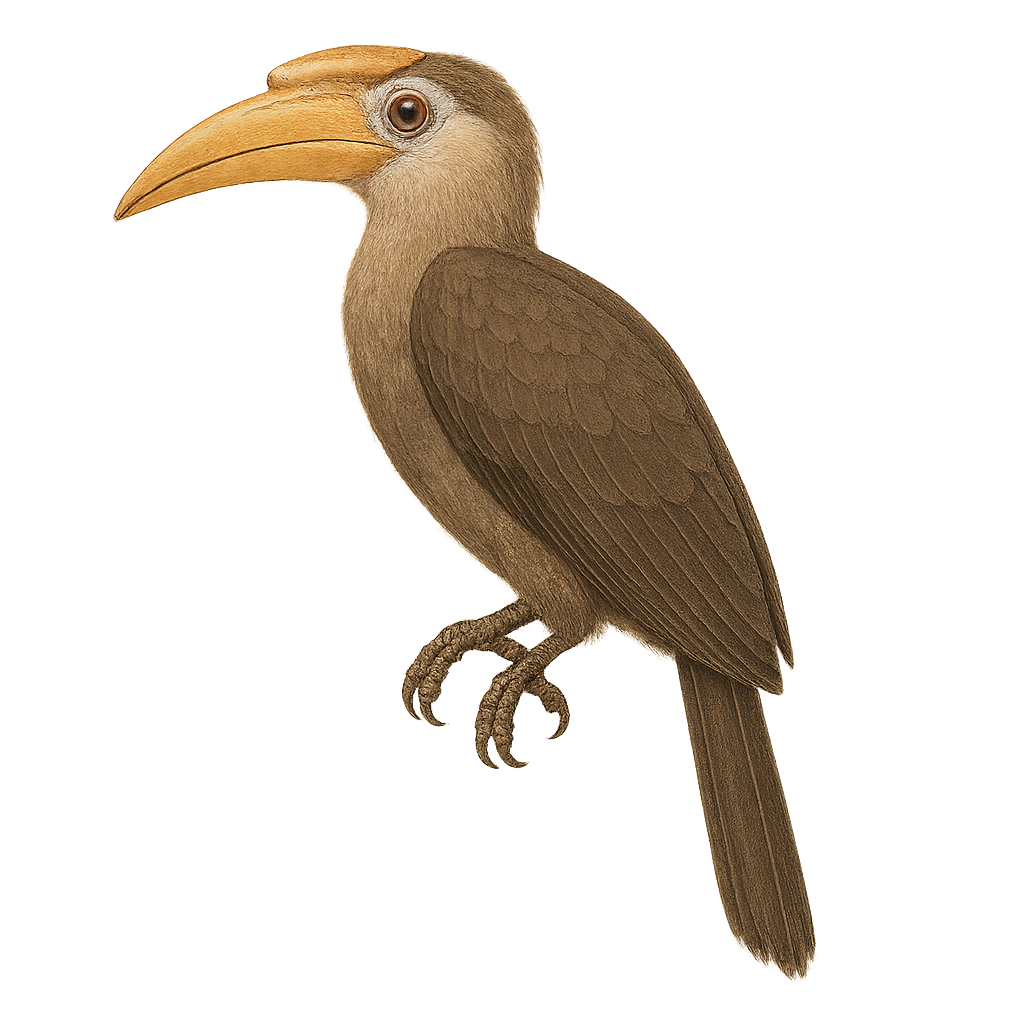The alpine accentor is a small mountain passerine, 14–15 cm long, with streaked grey-brown plumage and a slightly darker head. It inhabits alpine rocky slopes, scree, and high meadows, feeding on insects, seeds, and berries. During the breeding season, males and females establish territories and the male performs song flights to attract the female.
The Addax, or white antelope, is a critically endangered species native to the Sahara Desert. Adapted to harsh desert conditions, it has a light-colored coat that reflects sunlight and broad hooves for walking on sand. Addaxes live in small herds and primarily feed on grasses and leaves. They can survive long periods without water. Unfortunately, overhunting and habitat loss have drastically reduced their numbers. Conservation efforts are underway to protect this iconic desert species.
The Atlantic Yellow-nosed Albatross, Thalassarche chlororhynchos, is a medium-sized seabird known for its bright yellow bill and long, narrow wings. It has predominantly white plumage with dark wings and a grey head. This albatross breeds mainly on islands in the South Atlantic, forming dense colonies. It is renowned for its long gliding flights over the ocean, using air currents to travel vast distances with minimal effort. Although an excellent navigator, it is threatened by longline fishing and marine pollution.
The American Alligator d'Amérique, often simply referred to as the Mississippi Alligator d'Amérique, is an imposing and formidable reptile, easily recognizable by its dark skin and sharp eyes. It primarily inhabits the swamps, rivers, and lakes of the southeastern United States, where it is a top predator in the food chain. The alligator is an opportunistic hunter, feeding on fish, birds, small mammals, and even carrion. It has a remarkable ability to adapt and can survive in various environments, from freshwater swamps to salty coastal areas.
During the breeding season, males emit powerful calls that echo through the swamps to attract females, and nests are built in strategic locations to maximize egg protection.
The African Firefinch, or Lagonosticta rubricata, is a small African bird with bright red and brown plumage, often adorned with white spots on its belly. It is primarily found in savannas, open forests, and shrublands. This bird measures about 10 to 11 cm in length and weighs between 8 and 12 grams. Males and females exhibit sexual dimorphism, with males displaying brighter colors. They mainly feed on seeds but also consume insects. The African Firefinch is known for its melodious song and social behavior, often living in small groups. Its geographical range extends from West Africa to East Africa, and it is generally sedentary, although some local movements may occur depending on climatic conditions and resource availability.
The Ameerega braccata is a captivating species belonging to the Dendrobatidae family. Native to the tropical rainforests of South America, it is renowned for its vibrant colors and intriguing behavior. This diurnal species thrives in humid environments, such as undergrowth and areas near water bodies, and primarily feeds on small insects and invertebrates. Although its conservation status is not currently alarming, deforestation and habitat loss pose potential threats. Reproduction typically occurs during the rainy season when conditions are optimal for tadpole development.
The Andean poison frog is a small, brightly colored frog, predominantly black with red or yellow spots, inhabiting the humid tropical forests of Colombia. Measuring about 2 to 3 cm, this species is known for its toxic skin, a natural defense against predators. It primarily feeds on small insects and arthropods. Males are territorial and use vocalizations to attract females and ward off rivals. Their reproduction involves parental care, with the male carrying tadpoles on his back to suitable water points. This species is threatened by deforestation and habitat loss, leading to its classification as vulnerable by the IUCN.
The African Wild Ass, or Equus africanus, is a species of equid native to the arid and semi-arid regions of East and Northeast Africa. It is the wild ancestor of the domestic donkey. This mammal is well adapted to its harsh environment, capable of surviving with minimal water and food. It has a light grey coat with black stripes on its legs, reminiscent of a zebra. Its long, mobile ears allow it to detect predators from a distance. The African Wild Ass lives in small family groups and primarily feeds on grasses and shrubs. Unfortunately, it is critically endangered due to hunting and habitat loss.
The African Darter, or Anhinga rufa, is a slender waterbird known for its long, snake-like neck and dark plumage. It primarily inhabits lakes, rivers, and marshes in sub-Saharan Africa. This bird is often seen swimming with only its neck and head above water, resembling a snake. The African Darter feeds mainly on fish, which it catches with its sharp, pointed bill. After fishing, it often perches on a branch to dry its wings, as its feathers are not waterproof. This behavior is crucial for maintaining its flight capability.
The Anhinga, also known as the "snakebird," is a captivating aquatic bird. It is characterized by its long, sinuous neck and sharp beak, ideal for catching fish. Its plumage is predominantly black with metallic sheens, and its wings feature distinctive silver patterns. Unlike other water birds, the Anhinga lacks oil glands to waterproof its feathers, making it more adept at diving deep to hunt. After fishing, it must dry its wings by spreading them in the sun. It is primarily found in swamps, lakes, and rivers of Central and South America.
The Nettapus auritus, or African Pygmy Goose, is a small African duck with distinctive plumage. Males have a white head with metallic green patches, while females display more subdued tones. Their body is mainly brown with greenish reflections on the wings. These aquatic birds prefer wetlands such as marshes and shallow lakes where they feed on seeds and aquatic plants. They are often seen in small groups and are known for their fast, direct flight. Their behavior is generally suspicious, making them difficult to approach.
The Azara's Tanager is a colorful bird belonging to the toucan family. It is distinguished by its vibrant plumage, mainly black with touches of red, yellow, and green. Its long, curved beak is typical of toucans and features distinctive patterns. This bird measures about 30 to 40 cm in length. It primarily inhabits the tropical rainforests of South America, notably in Brazil, Bolivia, and Paraguay. The Azara's Tanager is a social bird, often seen in small groups. It mainly feeds on fruits but also consumes insects and small vertebrates. Although not considered threatened, deforestation poses a potential threat to its natural habitat.
The Argali is the largest wild sheep in the world, known for its imposing size and majestic spiral horns. It primarily inhabits the mountains of Central Asia, where it frequents the arid and semi-arid regions of steppes and high plateaus. This large ungulate is perfectly adapted to mountainous environments, moving nimbly on steep terrain at high altitudes. The Argali is a herbivore, feeding on grasses and woody plants.
The Argali is also a symbol of strength and resilience, but it is threatened by habitat loss and overhunting. Conservation efforts are underway to protect this iconic species and preserve its natural habitat.
The Atelopus balios is a species of toad belonging to the Bufonidae family. This toad is endemic to Ecuador, where it primarily inhabits humid montane forests. It is characterized by its smooth skin and bright colors, often a mix of green, yellow, and black, which allow it to blend into its natural environment. Unfortunately, this species is critically endangered due to habitat loss, pollution, and fungal diseases such as chytridiomycosis. Conservation efforts are crucial to ensure the survival of this unique species.
The American Avocet is an elegant and distinctive bird, recognizable by its contrasting black and white plumage and its long, upward-curved bill. It primarily frequents wetlands, such as salt marshes, shallow ponds, and muddy shores. This bird is often seen sweeping the water's surface with its bill to capture aquatic invertebrates. During the breeding season, avocets form colonies and build their nests on the ground, often on islets to protect against predators. Their social behavior is fascinating, with complex courtship displays and aggressive defense of their territory. Although their population is stable, habitat destruction remains a potential threat.
The Andean Avocet, Recurvirostra andina, is an elegant and distinctive bird, recognizable by its long, upward-curving bill and slender legs. It features primarily white plumage with black wings, making it easily identifiable in its natural habitat. This bird is mainly found in the wetlands of the Andean highlands, where it feeds on small aquatic invertebrates. The Andean Avocet is a gregarious species, often seen in small groups. It is well adapted to high-altitude environments, allowing it to thrive in sometimes harsh climatic conditions. Although its conservation status is not concerning, it remains vulnerable to environmental changes and habitat degradation.
The Axolotl is a fascinating species of amphibian native to lakes around Mexico City, Mexico. Unlike most other amphibians, the Axolotl retains its juvenile form throughout its life, a phenomenon known as neoteny. It is famous for its exceptional ability to regenerate parts of its body, including limbs, internal organs, and even its heart. It has a distinctive appearance with its pale pink skin and external gills, giving it the appearance of a small aquatic dragon. The Axolotl primarily lives in cold, deep waters of lakes, where it feeds on small invertebrates.
Aye-aye
Daubentonia madagascariensis
The Aye-aye is a nocturnal lemur endemic to Madagascar, known for its strange appearance, notably its extremely long and thin middle finger which it uses to extract insects and larvae from tree trunks. It is a shy and secretive animal, primarily living in the tropical forests of the island. Due to its unique feeding method, it is sometimes viewed as an omen of misfortune by local populations, though its ecological role in maintaining forest balance is crucial. The Aye-aye is listed as vulnerable due to deforestation and cultural beliefs surrounding it.
The African Openbill, or Anastomus lamelligerus, is a bird from the Ciconiidae family, predominantly found in sub-Saharan Africa. It is easily recognizable by its distinctive bill, slightly curved with a gap between the mandibles, perfect for catching snails, its primary food source. Its plumage is generally black with metallic sheens, and it has long legs adapted for walking in wetlands. It frequents marshes, rivers, and lakes, where it can be seen foraging. Although often solitary, it may gather in groups during the breeding season.
The American Woodcock, Scolopax minor, is a medium-sized bird known for its mottled brown plumage that provides excellent camouflage in the underbrush. It has a long, straight bill perfect for probing the soil for worms and insects. This bird is most active at dusk and dawn, performing its spectacular courtship displays. The American Woodcock is a partial migrant, moving southward in winter. It favors moist habitats such as deciduous forests and swamps. Although elusive, it can occasionally be spotted due to its distinctive call and acrobatic flights.
The Asian Dowitcher is a medium-sized wader bird, identifiable by its long straight bill and partially webbed feet. Its plumage is mainly brown with lighter patterns on the belly, allowing it to blend into the wetland habitats it frequents. It is often seen in coastal areas, estuaries, and salt marshes in Asia, where it feeds on small invertebrates by probing the mud with its bill. As a migratory bird, it travels long distances between its breeding sites and wintering grounds. Although its conservation status is concerning, efforts are underway to protect its habitats and ensure its survival.
The American Bison is one of the largest land mammals in North America, recognizable by its massive head, thick fur, particularly on its back. Once widespread, it nearly went extinct in the 19th century due to overhunting and habitat loss. Today, thanks to conservation efforts, the population of American Bison is growing, though the species remains protected in many areas.
The American Bison lives in herds, primarily in grasslands and plains. Herbivorous, it feeds on grasses, woody plants, and some vegetation. As it moves, it creates powerful tracks in the plains. This social mammal is also known for its territorial behavior, with males fighting for dominance within the group.
The Asian badger, or Meles leucurus, is a medium-sized mammal belonging to the Mustelidae family. It is distinguished by its thick fur and characteristic coloration, with a white stripe on the throat and belly. This badger is primarily nocturnal and inhabits forests, grasslands, and steppes of Central and East Asia. It digs complex burrows where it spends the day and raises its young. Omnivorous, it feeds on small animals, insects, fruits, and roots. Although generally solitary, it can sometimes be seen in small family groups. Its adaptability to various habitats and suspicious behavior make it difficult to observe in the wild.
The American Badger is a medium-sized carnivore, easily recognizable by the distinctive white stripes on its head and its sturdy, stocky body. It primarily inhabits prairies and semi-arid areas in North America, where it digs complex burrows for shelter and raising its young. The American Badger is mainly insectivorous, feeding on worms, insects, and occasionally small mammals and reptiles. Its powerful claws allow it to dig quickly and efficiently into the ground.
The American Badger is a solitary animal, often active at dusk and during the night. While not immediately endangered, it can be affected by habitat loss and illegal hunting in some regions.
The Alpine Ibex is a large herbivorous mammal, easily recognized by its long, curved horns and light brown or grayish coat. It primarily inhabits the rugged mountains of the Alps, southern Europe, and some mountainous regions of the Middle East. The Alpine Ibex feeds on alpine vegetation, grasses, and woody plants, and it is particularly adapted to life at high altitudes due to its great agility on rocky terrain and its thick coat.
This animal is social and lives in family groups, although adult males, called "ibex", form separate groups. After nearly disappearing in the early 20th century due to overhunting, conservation programs have helped stabilize its population. However, it remains vulnerable to habitat loss and human disturbances.
The Azores Bullfinch, or Pyrrhula murina, is an endemic bird of the Azores, specifically found on the island of São Miguel. This medium-sized bird, measuring about 17 cm in length, is characterized by its grey and black plumage, with white accents on the wings. The male and female show little sexual dimorphism, although the male often has slightly brighter colors. The Azores Bullfinch is primarily granivorous, feeding on seeds, buds, and fruits. It inhabits the humid forests and wooded areas of the island, playing an important role in seed dispersal. Unfortunately, this species is critically endangered due to habitat loss and predation by introduced species.
The Abyssinian Ground Hornbill, or Bucorvus abyssinicus, is a large terrestrial bird known for its striking black plumage and vivid red markings around its eyes and neck. It is primarily found in sub-Saharan Africa, inhabiting savannas and open grasslands. This bird is notable for its social behavior, often living in small family groups. It feeds mainly on insects, small reptiles, and mammals. Its call is deep and resonant, often heard at dawn. The Abyssinian Ground Hornbill plays an important ecological role in controlling insect and small animal populations. Its longevity and low reproductive rate make it vulnerable to environmental disturbances.
The American Bittern, Botaurus lentiginosus, is a medium-sized wading bird belonging to the Ardeidae family. It is primarily found in North America, inhabiting marshes and wetlands. Its brown plumage with darker streaks provides excellent camouflage among reeds. Known for its distinctive call, often likened to a water pump, the American Bittern feeds mainly on fish, insects, and small mammals. Although elusive, it can sometimes be seen standing still, adopting a vertical posture to blend into its surroundings.
The African Grey Hornbill, or Tockus nasutus, is a medium-sized bird known for its long, curved bill, typically black with a lighter base. It features predominantly grey plumage with lighter shades on the belly and white markings on the wings. This bird is widespread in sub-Saharan Africa, inhabiting savannas, open forests, and wooded areas. It is noted for its social behavior, often seen in small groups or pairs. The African Grey Hornbill primarily feeds on fruits, insects, and occasionally small vertebrates. Its call is distinctive, consisting of nasal cries and whistles.
The Austen's Brown Hornbill, or Anorrhinus tickelli, is a medium-sized hornbill found in dry forests and wooded hills of Southeast Asia, especially in Myanmar, Thailand, and western Laos. It is identified by its uniformly dark brown plumage, contrasting black-and-white tail, and dark bill without a prominent casque. Highly social, it moves in family groups and is often noisy, producing harsh calls and barking sounds. It feeds on fruits, insects, and occasionally small vertebrates. Although somewhat tolerant of disturbed areas, this hornbill is vulnerable to deforestation.



